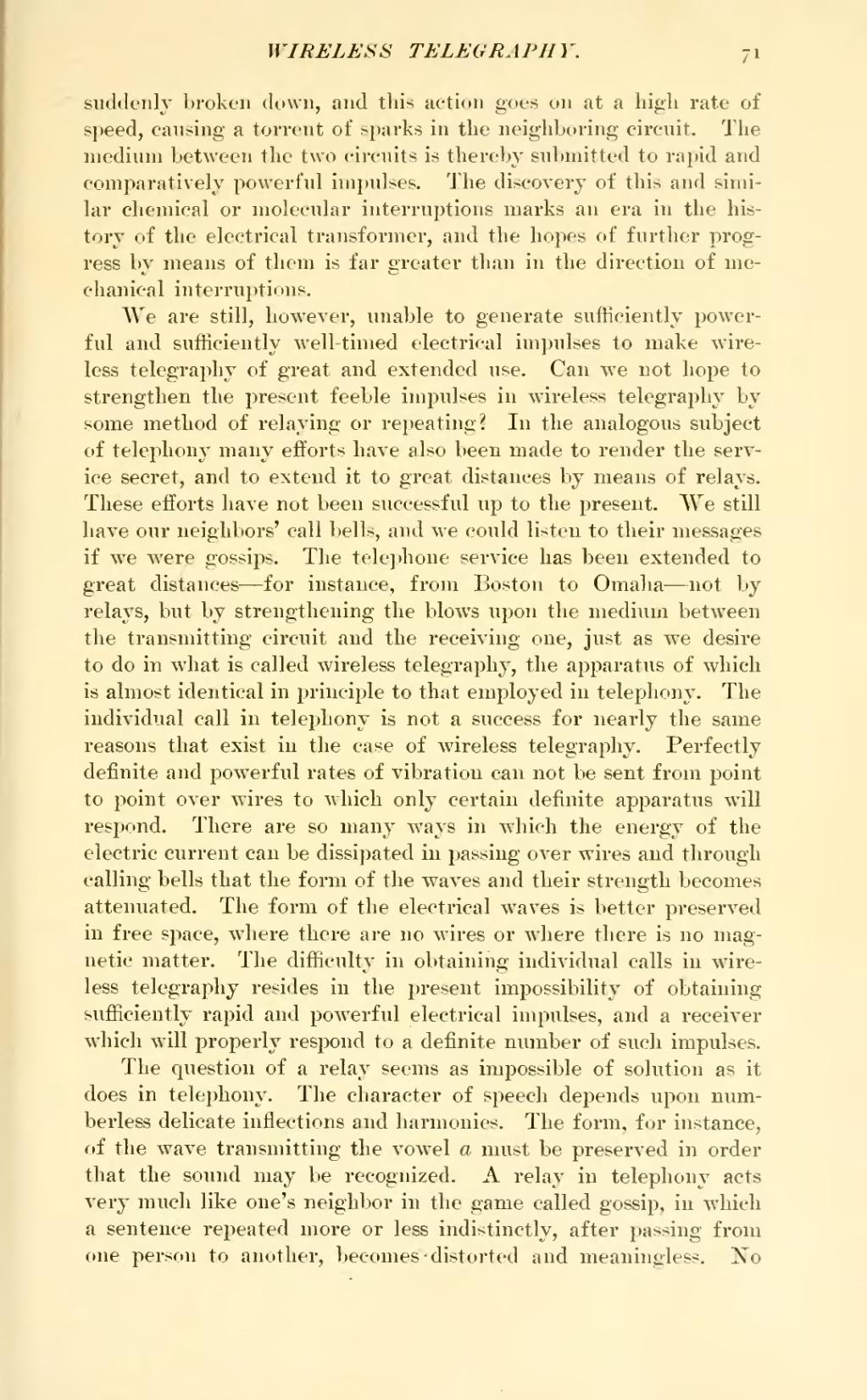suddenly broken down, and this action goes on at a high rate of speed, causing a torrent of sparks in the neighboring circuit. The medium between the two circuits is thereby submitted to rapid and comparatively powerful impulses. The discovery of this and similar chemical or molecular interruptions marks an era in the history of the electrical transformer, and the hopes of further progress by means of them is far greater than in the direction of mechanical interruptions.
We are still, however, unable to generate sufficiently powerful and sufficiently well-timed electrical impulses to make wireless telegraphy of great and extended use. Can we not hope to strengthen the present feeble impulses in wireless telegraphy by some method of relaying or repeating? In the analogous subject of telephony many efforts have also been made to render the service secret, and to extend it to great distances by means of relays. These efforts have not been successful up to the present. We still have our neighbors' call bells, and we could listen to their messages if we were gossips. The telephone service has been extended to great distances—for instance, from Boston to Omaha—not by relays, but by strengthening the blows upon the medium between the transmitting circuit and the receiving one, just as we desire to do in what is called wireless telegraphy, the apparatus of which is almost identical in principle to that employed in telephony. The individual call in telephony is not a success for nearly the same reasons that exist in the case of wireless telegraphy. Perfectly definite and powerful rates of vibration can not be sent from point to point over wires to which only certain definite apparatus will respond. There are so many ways in which the energy of the electric current can be dissipated in passing over wires and through calling bells that the form of the waves and their strength becomes attenuated. The form of the electrical waves is better preserved in free space, where there are no wires or where there is no magnetic matter. The difficulty in obtaining individual calls in wireless telegraphy resides in the present impossibility of obtaining sufficiently rapid and powerful electrical impulses, and a receiver which will properly respond to a definite number of such impulses.
The question of a relay seems as impossible of solution as it does in telephony. The character of speech depends upon numberless delicate inflections and harmonies. The form, for instance, of the wave transmitting the vowel a must be preserved in order that the sound may be recognized. A relay in telephony acts very much like one's neighbor in the game called gossip, in which a sentence repeated more or less indistinctly, after passing from one person to another, becomes distorted and meaningless. No

